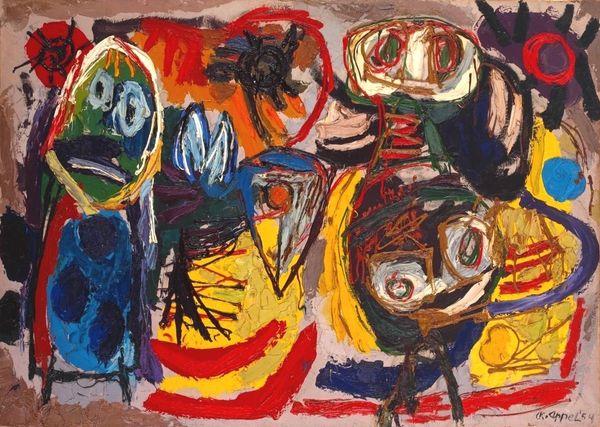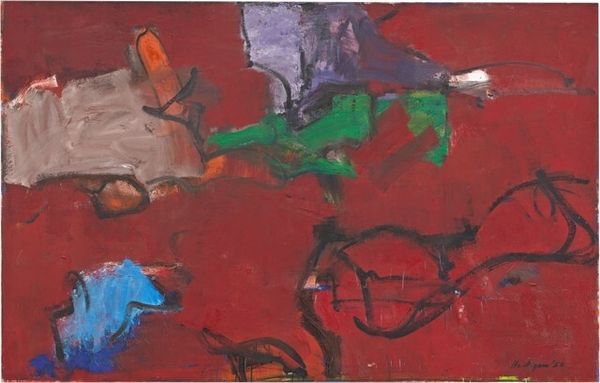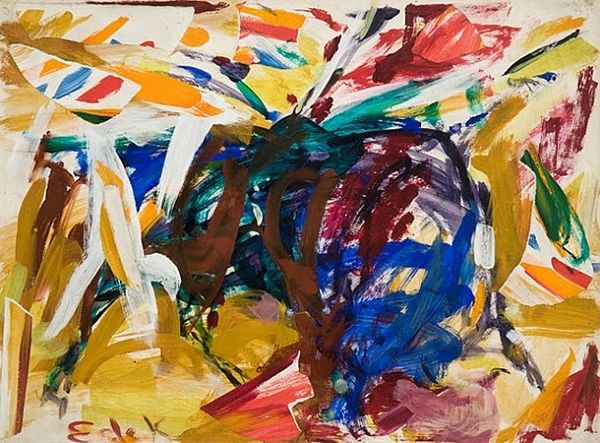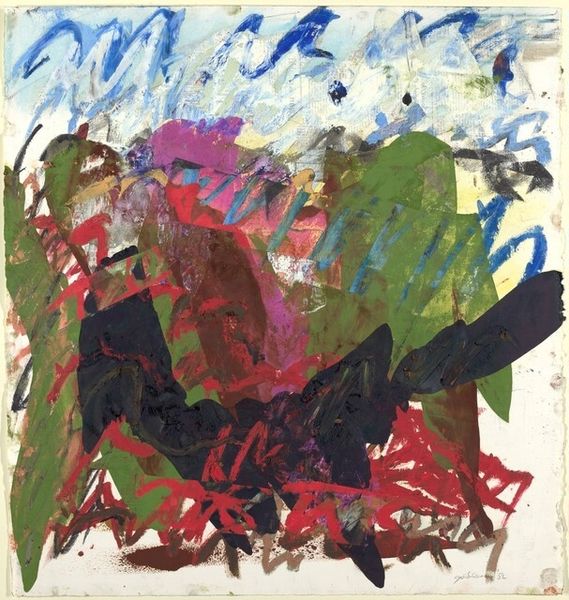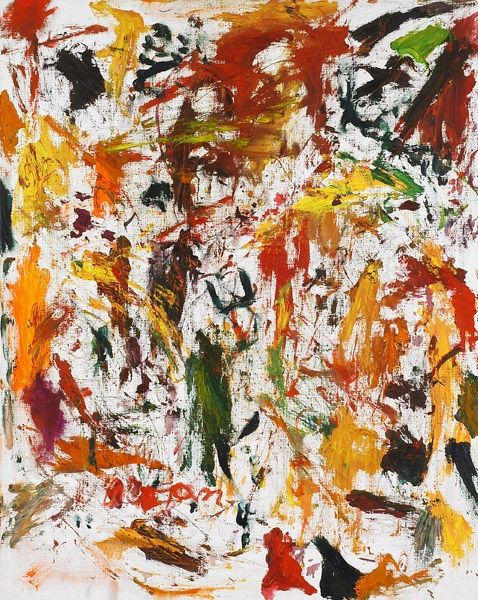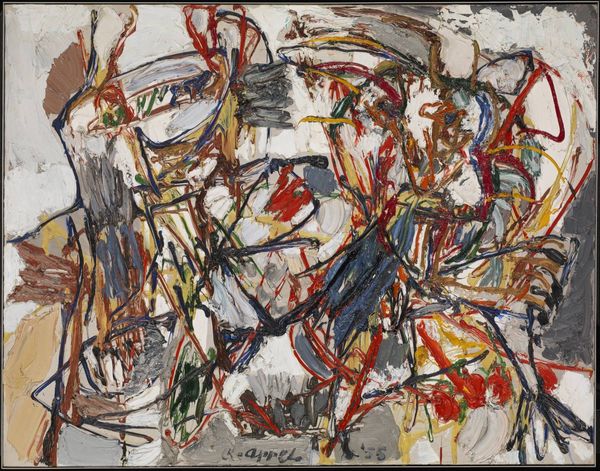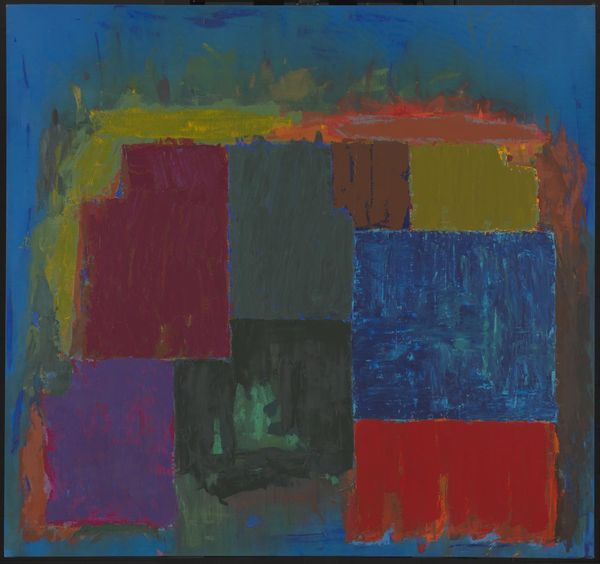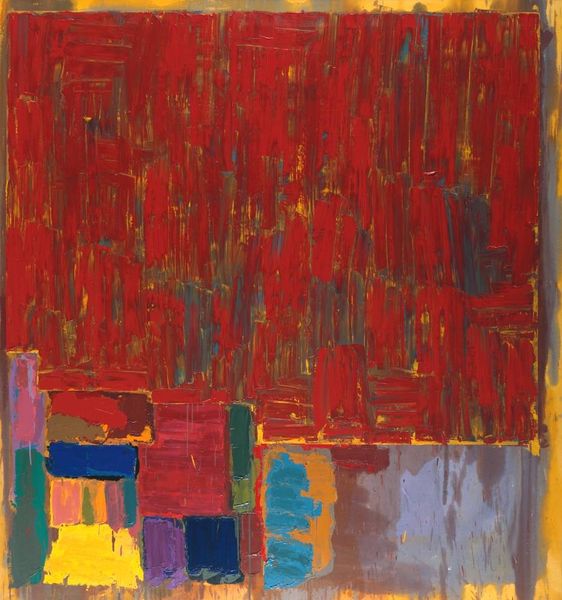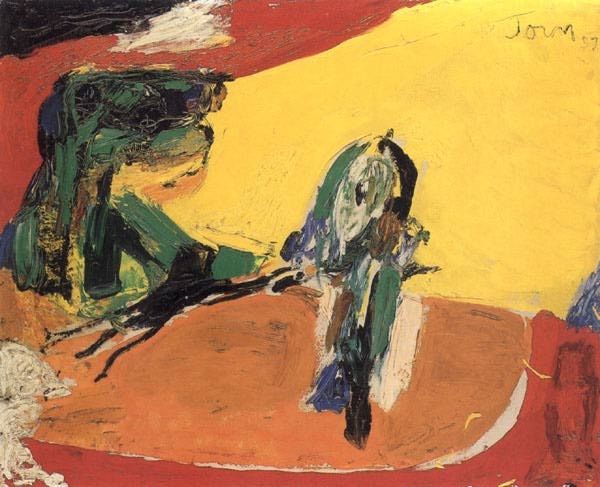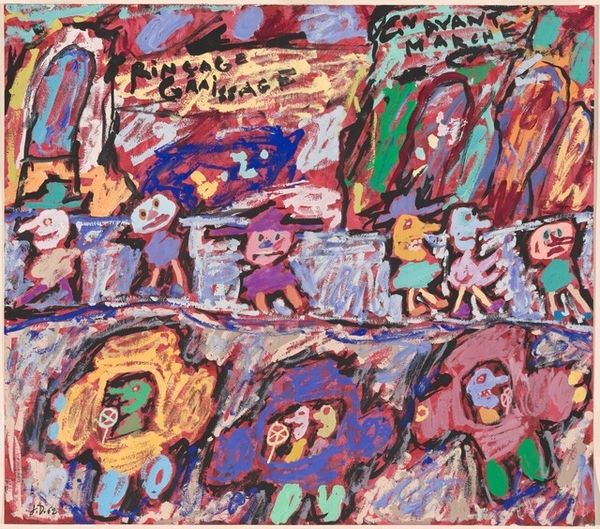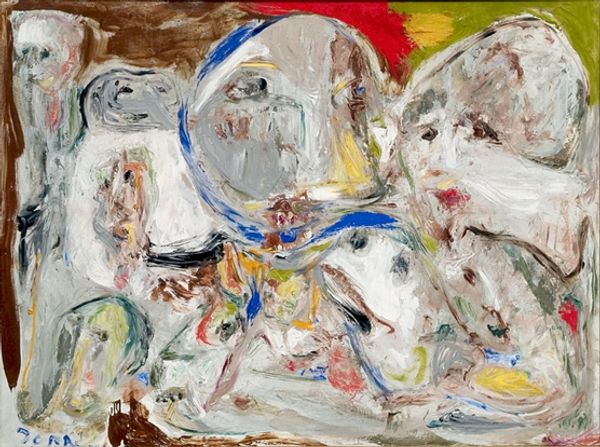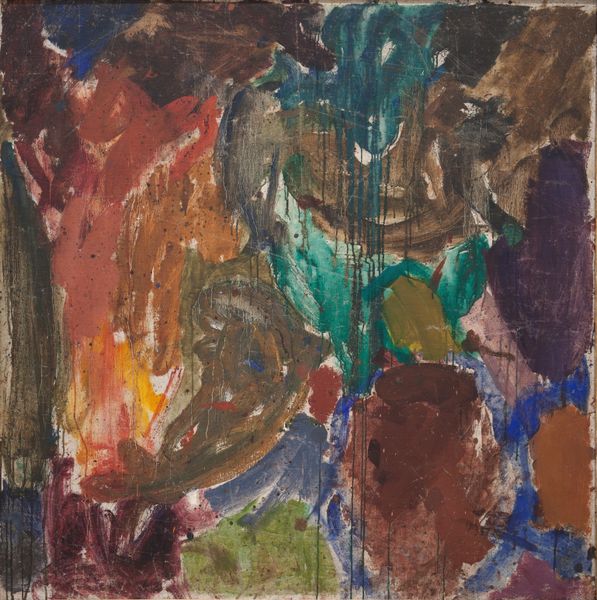
Copyright: Valerii Lamakh,Fair Use
Editor: We’re looking at Valerii Lamakh's "Composition #7" from 1960, done in acrylic paint. The painting bursts with raw energy; it's all vibrant colors applied with seemingly unrestrained gestures. How do you approach interpreting a work like this? Curator: I'm particularly interested in how Lamakh’s physical engagement with the materials manifests itself. The gestural application of paint – you see the thickness, the layering, the sheer physicality of the act. Do you think about what acrylic paint meant for artists at that time? Editor: Well, I imagine that acrylics, being relatively new then, offered possibilities for bold color and faster drying times compared to oils? Curator: Precisely. This speed allowed artists like Lamakh to build up layers rapidly and to explore new techniques. Notice how the dense layers create texture. It’s almost a matter-painting effect. This relates to post-war explorations of materiality, doesn't it? What are your thoughts on the overall mood created by such methods? Editor: I see how the intense colors and textured surface could convey a sense of urgency and even unease, fitting for a time of global tension. There is something viscerally compelling about his way of working. Curator: Exactly! The materiality speaks to anxieties around industrialisation. In essence, we are left with questions of what matters most. What has stood out for you? Editor: How considering the materials and techniques opens up richer cultural readings of abstract art. Curator: Agreed. Looking at the art this way contextualizes it firmly in its time, revealing the social dimensions of making art.
Comments
No comments
Be the first to comment and join the conversation on the ultimate creative platform.
